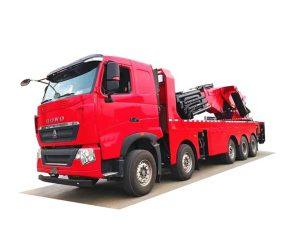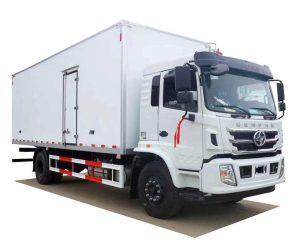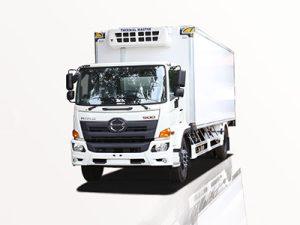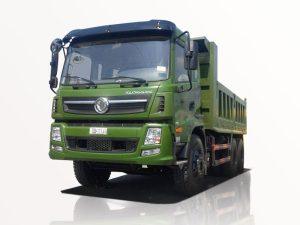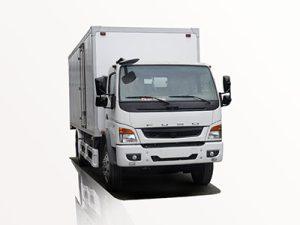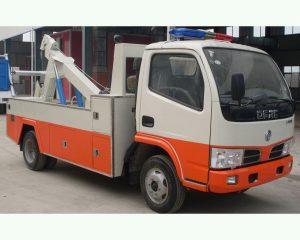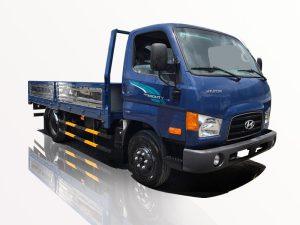Monday to Saturday - 8:00 -17:30
How Many Gallons Does a Fuel Truck Hold? A Comprehensive Guide
Introduction
Fuel trucks are vital in transporting various types of fuel, from gasoline to diesel, propane, and other specialty fuels. Their capacity can significantly impact logistics, costs, and operational efficiency. When discussing fuel trucks, a common question arises: “How many gallons does a fuel truck hold?” In this article, we will delve into the different types of fuel trucks, their capacities, factors affecting their size, and practical applications. By understanding these aspects, readers can make informed decisions regarding fuel transportation needs.
Understanding Fuel Truck Types
Fuel trucks come in various sizes and types, each designed for specific uses. The capacity of these trucks can range from a few hundred to several thousand gallons. Here, we will explore the two main categories of fuel trucks: commercial fuel trucks and specialized fuel trucks.
Commercial Fuel Trucks
Commercial fuel trucks are commonly used for general fuel delivery. They are often subdivided into two primary types based on their tank sizes:
Standard Fuel Trucks
Standard fuel trucks generally hold between 1,000 to 3,500 gallons of fuel. These trucks are commonly used by gas stations, convenience stores, and large fleets that require regular deliveries of gasoline and diesel for vehicles. The size can vary based on the truck’s build and the type of fuel it transports.
Large Capacity Fuel Trucks
For larger operations, fuel trucks can hold upwards of 4,000 gallons, with some specialized trucks designed to carry up to 10,000 gallons or more. These are often used for industrial applications, construction sites, or large agricultural operations that require frequent fuel deliveries.
Specialized Fuel Trucks
Specialized fuel trucks include those that transport liquefied gases like propane or specialized fuels for aviation. Their tank sizes can vary but generally align with the requirements of the fuel type.
Propane Delivery Trucks
Propane delivery trucks usually hold between 1,200 to 2,000 gallons. Transporting propane requires specific regulatory compliance due to its flammable nature, which also affects the tank design and safety features.
Aviation Fuel Trucks
Aviation fuel trucks are designed to deliver jet fuel directly to airplanes, often delivering between 1,500 to 5,000 gallons. These specialized trucks ensure efficient delivery while adhering to stringent safety regulations.
Factors Affecting Fuel Truck Capacity
The capacity of fuel trucks can vary greatly, impacted by several factors including legal regulations, design specifications, and operational needs. Understanding these factors is crucial in determining the appropriate fuel truck for your operation.
Legal Regulations
Various local, state, and federal regulations govern the transportation of fuel. These regulations determine aspects like the maximum volume of fuel a truck can carry on public roads. Compliance with the Department of Transportation (DOT) and other regulatory bodies is essential.
Truck Design and Configuration
The design and configuration of the fuel tank also significantly impact capacity. Factors include:
- Material: Fuel tanks can be made from steel or aluminum, with each affecting weight and volume.
- Shape: Cylindrical tanks tend to maximize volume compared to other shapes.
- Insulation: Trucks equipped with insulated tanks might have modified capacities tailored for specific fuels.
Operational Needs
The specific requirements of the business using the fuel truck also dictate capacity. Operations with high fuel demand will benefit from larger trucks, while smaller businesses might find standard capacity trucks sufficient.
Common Capacities of Fuel Trucks
To provide a clearer understanding, here is a table depicting common fuel truck sizes:
| Truck Type | Typical Capacity (Gallons) | Common Uses |
|---|---|---|
| Standard Fuel Truck | 1,000 – 3,500 | Gas stations, farms, fleet services |
| Large Capacity Truck | 4,000 – 10,000+ | Industrial applications, construction sites |
| Propane Delivery Truck | 1,200 – 2,000 | Residential and commercial propane delivery |
| Aviation Fuel Truck | 1,500 – 5,000 | Airport fuel delivery |
| Specialized Fuel Truck | Variable | Depending on the fuel type |
How to Choose the Right Fuel Truck Capacity
Selecting the right fuel truck involves several key considerations that align with your operational requirements. Here are practical examples and tips for making the best choice:
1. Assess Your Fuel Needs
Evaluate how much fuel your operations consume on average. For instance, if your fleet of vehicles consumes around 1,000 gallons of fuel per week, a truck with at least a 3,000-gallon capacity would be necessary to ensure sufficient supply.
2. Consider Delivery Frequency
If you require frequent fuel deliveries, investing in a larger truck may optimize logistical efficiency. On the other hand, for businesses that order fuel less regularly, a smaller capacity truck may suffice.
3. Regulatory Compliance
Ensure compliance with local and federal regulations that may dictate the maximum amount of fuel you can transport. Researching DOT guidelines is crucial in this regard.
4. Explore Budget Constraints
Larger fuel trucks generally come with higher purchase and maintenance costs. Balance your needs with your budget constraints to determine the best capacity for your operation.
5. Plan for Future Growth
Consider your business’s growth potential and fuel demands over time. Opting for a slightly larger truck may provide flexibility for future expansions.
Maintenance and Safety Considerations
Proper maintenance and safety measures are essential for fuel trucks, given the hazardous nature of fuel. Here are some important points to consider:
Regular Inspections
Fuel trucks must undergo routine inspections to ensure safety and compliance with regulations. This includes checking for leaks, ensuring that all safety equipment is operational, and confirming that the tank’s integrity is intact.
Safety Features
Modern fuel trucks are equipped with a variety of safety features, including:
- Emergency shut-off valves: These are critical in preventing fuel leaks in case of an accident.
- Fire extinguishers: Every fuel truck should carry adequate fire suppression equipment.
- Proper signage: Ensure that warning and safety signs are clearly visible on the truck.
Training for Operators
All operators of fuel trucks should receive appropriate training regarding the safe handling of fuel. This includes understanding how to respond in emergencies and proper fueling techniques.
Conclusion
Selecting the right fuel truck involves understanding capacity requirements based on operational needs, regulatory compliance, and safety considerations. With the knowledge of varying fuel truck types, their respective capacities, and best practices for maintenance and safety, businesses can make informed decisions tailored to their fuel transportation needs.
Frequently Asked Questions (FAQs)
1. What is the average capacity of a standard fuel truck?
The average capacity of a standard fuel truck ranges from 1,000 to 3,500 gallons, depending on the design and specific operational needs.
2. How often should fuel trucks be inspected?
Fuel trucks should undergo regular inspections at least once a year, or more frequently depending on usage and regulatory requirements.
3. What type of fuel can a fuel truck transport?
Fuel trucks can transport various types of fuel, including gasoline, diesel, propane, and aviation fuel, with capacities varying according to the type of fuel.
4. Are there specific licensing requirements for operating fuel trucks?
Yes, operators of fuel trucks often need a special commercial driver’s license (CDL) and may require additional certifications depending on local regulations.
5. How can I ensure the safety of my fuel truck operations?
Ensuring safety involves regular inspections, equipping trucks with safety features, proper operator training, and adhering to all local and federal regulations.
6. Can fuel trucks be retrofitted for larger capacities?
While some modifications can be made, retrofitting a truck for a larger capacity is complicated and may require adherence to strict regulatory guidelines. It’s often more efficient to purchase a truck designed for higher capacity.


